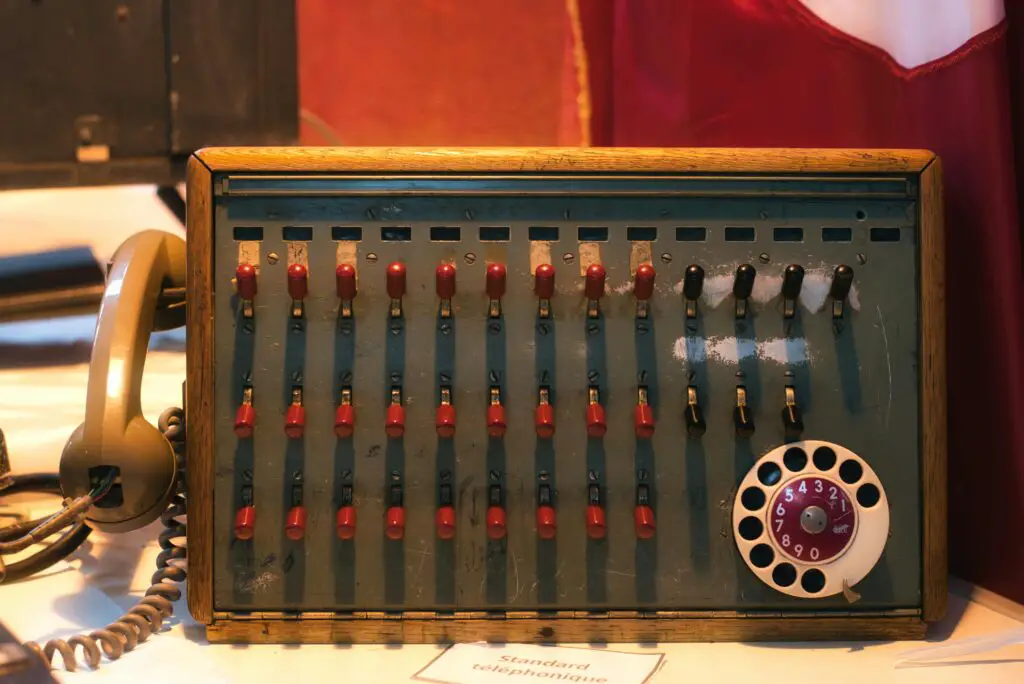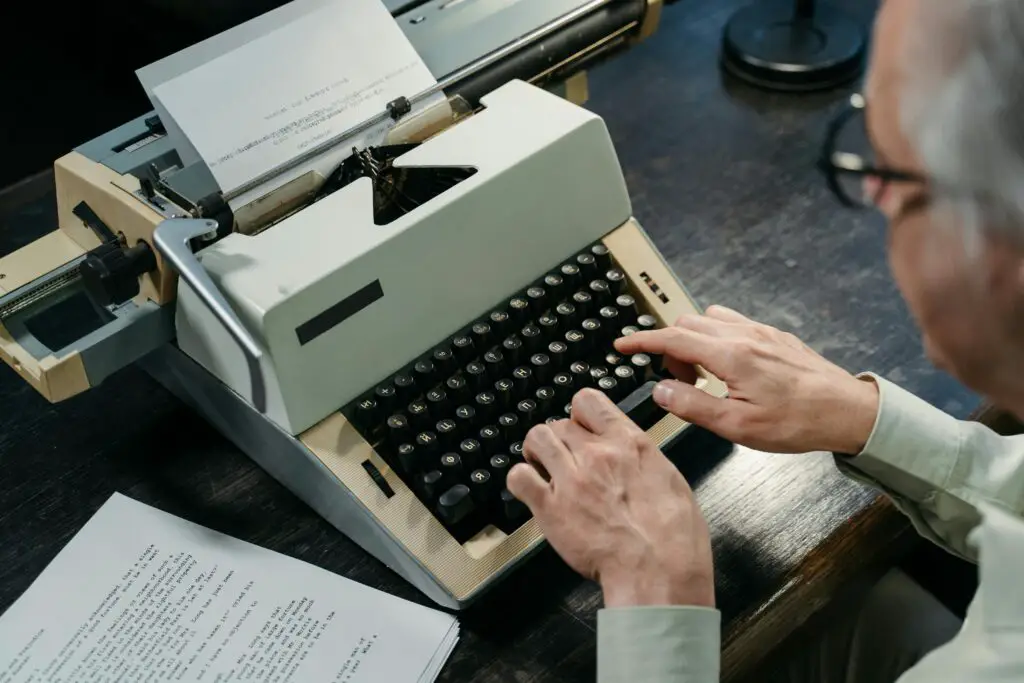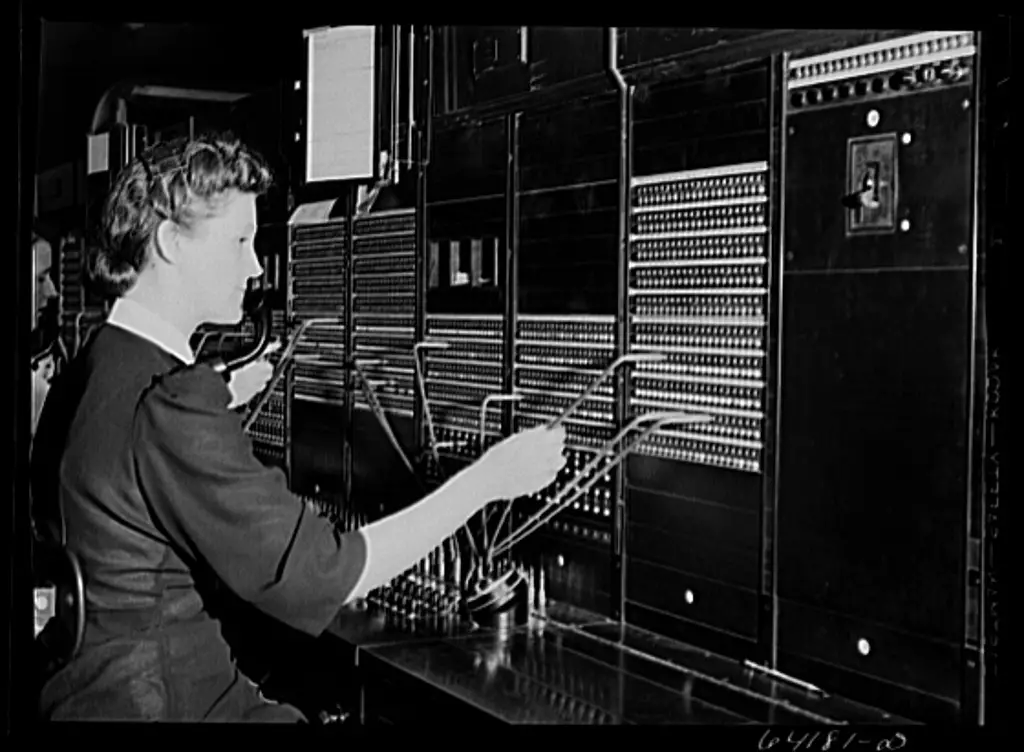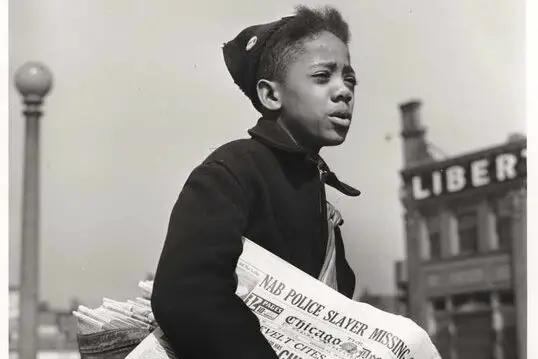1. Switchboard Operator

Before the rise of modern telecommunications, switchboard operators were the unsung heroes of phone networks. They were the ones who manually connected calls by plugging wires into different jacks on the switchboard. Operators needed to be quick, efficient, and have a deep knowledge of the phone lines, but they also had to be polite and professional since they interacted directly with callers. Their primary job was to ensure that a caller’s call was routed correctly, which could involve switching between dozens of connections. The position required great attention to detail, as mistakes in routing could result in missed connections and frustrated callers. These operators often worked long hours, including late-night shifts, to keep the network running 24/7. The growth of automated systems, including the development of direct dialing in the ’60s and ’70s, meant that operators became less and less necessary says Vox.
Switchboards were replaced with automated exchanges and self-service systems, which made the job obsolete. The invention of electronic switching and the expansion of telephone networks allowed people to dial directly, without the need for a middleman. This change ultimately phased out the role of the switchboard operator as technology continued to improve and reduce the need for human intervention in phone systems. Operators who had spent decades in the job had to either retrain or face unemployment as automation took over. The transition was difficult for many, as it represented a larger shift in the workforce, away from manual labor and toward technology-driven solutions. As we look back, it’s clear that the rise of technology made these roles unnecessary, but for those who worked in them, the loss of the job signified a major societal change.
2. Ice Cutter

Before refrigeration and electric freezers, ice cutters were essential workers who provided ice for homes, businesses, and even ships. These workers would cut large blocks of ice from frozen lakes or ponds, using sharp saws, and then transport them to customers. Ice was used not just for cooling drinks, but for preserving food and even in early forms of air conditioning. Ice houses, which were insulated buildings for storing ice, were once a common sight in colder regions, and ice cutters worked in the cold months to store enough to last the year. It was backbreaking work that required not only physical strength but knowledge of the ice, as workers had to carefully select which parts of the lake were safe to cut. Often, these workers would use horses and carts to deliver the ice to their clients, sometimes even traveling to remote areas explains Firstpost.
However, the advent of mechanical refrigeration in the late 19th and early 20th centuries rendered the ice-cutting profession largely obsolete. With the ability to create ice on-demand using refrigeration units, there was no longer a need to rely on seasonal ice harvesting. The development of refrigerators for home use replaced the need for ice in most households, and commercial refrigeration became standard for businesses. As a result, the role of the ice cutter vanished quickly, leaving workers to find new industries or leave the workforce entirely. While some small ice-cutting businesses persisted for a time, their operations couldn’t compete with the convenience of mechanical refrigeration. As refrigeration technology improved and became more affordable, the role of the ice cutter was completely phased out. It’s a fascinating look at how innovation can completely transform an industry and change the way people live.
3. Elevator Operator

Once upon a time, an elevator operator was a key part of any building with more than a few floors. The operator’s job was to manually control the elevator’s movements by pulling levers and pressing buttons, while ensuring passengers reached the right floor. In many cases, these workers acted as customer service representatives, offering a friendly greeting and even chatting with passengers during their short ride. In luxury buildings, elevator operators were often highly trained and dressed in uniforms, contributing to the elegance and prestige of the building. They were responsible for ensuring the elevator’s smooth operation and the safety of everyone riding it, which was especially important in the early days when elevator technology was still in its infancy. In high-rise buildings, the role was essential to maintaining a functional and efficient system explains New York Times.
The introduction of automatic elevators in the mid-20th century ended the need for manual operation. These elevators didn’t require an operator, as they could be controlled by passengers with just the push of a button. As buildings grew taller and technology advanced, the expense of maintaining an elevator operator became impractical. With automatic systems, elevators could travel more efficiently and quickly, without the need for a human intermediary says Quartz. In the 1950s and 1960s, the majority of elevators transitioned to automatic systems, and elevator operator positions were phased out. While some nostalgic buildings continued to use operators for a while, the convenience of self-service quickly became the standard. The decline of this position is a testament to how technology can make tasks that once seemed complex and necessary much simpler and more accessible to the general public.
4. Milkman

In the days before supermarkets and refrigerators, milk delivery was a daily service that many families relied on. Milkmen would travel from house to house, delivering fresh milk in glass bottles, and in some cases, other dairy products like butter and cheese. Often, these deliveries were made early in the morning, and milkmen were a familiar and trusted part of daily life. The milk was typically delivered in glass bottles, and the milkman would even collect empty bottles from the previous delivery. For many people, it was a symbol of convenience, as they didn’t have to worry about running out of milk. The job required a reliable vehicle (often a horse-drawn cart in the early years) and a knack for customer service. The milkman would often interact with families and become a trusted part of the community adds CT Insider.
However, the rise of supermarkets and home refrigerators changed the landscape for milk delivery. Supermarkets offered a wider variety of dairy products, and refrigerators allowed families to store milk for longer periods of time. The rise of pasteurization also led to a longer shelf life for milk, reducing the need for daily deliveries. As a result, the milkman slowly disappeared from neighborhoods across the country. In addition, as mass production techniques improved, milk became cheaper and more readily available, further eroding the demand for home delivery. Although milk delivery still exists in some rural or specialty areas, the job of the traditional milkman is mostly a thing of the past. It’s interesting how a job so intimately tied to daily life could disappear with changes in society’s needs and technological advances.
5. Typist

Before the digital age, typists were essential workers, often employed by businesses, government offices, and professionals who needed documents produced quickly and accurately. Typists, or stenographers, would take dictation from their bosses or colleagues and transcribe it into typewritten documents. Their work required precision, speed, and a high level of focus. Most typists were highly skilled in touch typing, meaning they could type without looking at the keys, allowing them to work efficiently. These workers would use typewriters to create documents, which could then be carbon-copied for distribution. The work of a typist was integral to the smooth operation of many industries, and they were often seen as the backbone of office work. Their job was essential for maintaining a steady flow of paperwork, whether for legal documents, correspondence, or reports.
The rise of personal computers and word processing software in the ’80s and ’90s changed everything. With the development of computers, people no longer needed to rely on manual typewriters or dedicated typists. Word processing software allowed anyone with a computer to quickly and easily type up documents, often with spell check and editing features that made typing easier and more accurate. As computers became more ubiquitous, the need for dedicated typists vanished. Many typists retrained to use computer systems or transitioned into other office roles, but the sheer volume of typing jobs diminished. Today, the role of the typist has evolved, but it’s no longer the distinct profession it once was. As technology advanced, the need for a separate typing role became redundant, replaced by the widespread accessibility of personal computers.
6. Lamplighter

Before the invention of electric lights, cities relied on gas lamps to light the streets at night. Lamplighters were the individuals tasked with the job of lighting and extinguishing these lamps at specific times of the day. They would typically carry a long pole with a flame at the end to ignite the lamps, and sometimes they would also trim the wicks to ensure the lamps burned properly. The job was important for maintaining safety and visibility in cities during the dark hours, and lamplighters often worked late into the night or early in the morning. In some cities, they were even responsible for repairing lamps that went out. It was a job that required a great deal of patience and care, as lamplighters had to ensure each lamp was lit correctly. They were a familiar sight in urban areas, performing their duties with a sense of precision and ritual.
The introduction of electric streetlights in the late 19th century completely replaced gas lamps, making the lamplighter position unnecessary. Electricity was far more efficient, and cities quickly adopted electric lighting for both cost and convenience. As electric lights became widespread, the manual labor of lighting and extinguishing lamps became obsolete. The once common lamplighter position disappeared, and with it, a tradition that had been a hallmark of city life. The advent of electrical engineering and innovation in lighting systems completely changed the urban landscape. Today, streetlights are automated, and cities are no longer dependent on human workers to perform this essential task. The lamplighter’s disappearance serves as a reminder of how progress can quickly render certain jobs obsolete, no matter how important they once were.
7. Coal Stoker

Coal stokers were responsible for feeding coal into the boilers of steam engines and industrial furnaces. These workers were essential in factories, ships, and even large homes that used coal as a source of heat. The coal had to be shoveled in at a consistent rate to keep the engines running smoothly, and stokers had to work in tough conditions—often in very hot, cramped spaces. They were skilled laborers who had to manage the fire efficiently to ensure that the engine or furnace ran at the proper temperature. In steamships, for example, stokers worked tirelessly below deck, keeping the fire burning to power the ship’s engines. Coal was the primary source of energy for many industries during the Industrial Revolution, and stokers were an essential part of maintaining this energy flow.
As technology advanced, so did the sources of power. The rise of oil and electricity in the early 20th century dramatically reduced the need for coal. New technologies like electric motors and internal combustion engines replaced steam engines, and these did not require coal stokers to keep them running. The automation of many industrial processes also helped eliminate the need for manual laborers in coal management. Additionally, environmental concerns about coal’s impact on the air and climate led to the decline of coal-powered industries. As coal use became less efficient and less clean, the role of the coal stoker disappeared. This job, once an integral part of many industries, was phased out in favor of cleaner, more efficient energy sources.
8. Telephone Operator

Before smartphones and direct dialing, telephone operators were key in making calls connect. They worked in central offices, manually connecting calls by plugging wires into a switchboard. In addition to handling calls, operators often provided directory assistance, helped with troubleshooting, and offered a personal touch that is rarely seen in the fast-paced, digital world of communication today. The job required patience, focus, and a clear understanding of the intricate network of phone lines. Operators were often on call 24/7, and their work was essential for ensuring the network functioned smoothly. Many operators became skilled in handling a variety of requests, making them important figures in maintaining communication.
However, as the telephone system modernized, the need for operators decreased significantly. Automated switching systems were developed that could connect calls instantly without the need for manual intervention. Direct dialing became the norm, which rendered the role of the operator unnecessary. By the mid-20th century, most phone calls were connected automatically, and operators were replaced with technology. Despite the decline of the position, the work that operators did laid the groundwork for the development of modern telecommunications. The advent of touch-tone phones, mobile phones, and the internet eventually replaced the need for human operators, leaving them to find new work as technology rapidly advanced.
9. Pinsetter

In the early days of bowling, pinsetters were responsible for manually setting up the pins after each roll. These workers would run down the lane, pick up fallen pins, and reset them for the next player. The job was physically demanding and often required quick reflexes, as workers had to be agile enough to avoid getting hit by a fast-moving bowling ball. Pinsetters worked in bowling alleys and were essential to ensuring that the game continued smoothly. They were typically young people or individuals looking for part-time work, as it was a relatively low-skill job but one that required speed and accuracy. The work environment was often noisy and filled with the sound of rolling balls and falling pins.
The development of automatic pinsetters in the 1950s and 1960s revolutionized the game of bowling. These machines could quickly and efficiently reset pins without the need for human intervention. Automatic pinsetters not only saved time but also improved safety by removing people from the potentially dangerous environment near the bowling lane. As these machines became widely adopted, the job of the pinsetter quickly disappeared. Today, automatic pinsetters are standard in most bowling alleys, and human pinsetters are a thing of the past. While pinsetters were a crucial part of bowling history, technology ultimately replaced the need for human labor.
10. Tracer

Before computers, tracers were used in offices to manually copy important documents. They would trace over the original document to create a copy, sometimes using carbon paper, other times using special types of pens or pencils. This process was often done by hand, and tracers were essential for creating duplicates of blueprints, contracts, or other critical paperwork. The work required precision and attention to detail, as even a small error in tracing could ruin an important document. It was a tedious and time-consuming job, but essential in a world where paper records were the primary means of maintaining information. Tracers were often skilled at handling delicate documents, as they had to carefully work with papers that could be easily damaged.
With the advent of photocopying machines and digital document storage in the 20th century, the role of the tracer became obsolete. The ease of making photocopies and digital copies meant there was no longer any need for manual duplication. The rise of email and digital communication further reduced the reliance on paper documents, and the tracer’s work was no longer required. Today, office tasks that once relied on tracers are handled by scanners, printers, and digital systems, eliminating the need for manual document reproduction. As technology advanced, the need for manual labor in document management faded away, leaving tracers without work.
11. Ice Cream Scooper (Early Years)

In the early years of ice cream parlors, ice cream scoopers were often tasked with more than just serving scoops of the cold treat—they had to be part of the show. At a time when ice cream was a novelty, parlors hired individuals to carefully craft sundaes and create impressive ice cream designs for customers. The scooper’s job was a blend of artistry and customer service, with the goal of making each dish look as enticing as possible. They would often take pride in their ability to serve perfect scoops, ensuring each customer got their money’s worth. Because ice cream was often served in elaborate creations, the scooper needed to be well-versed in different recipes and methods of presentation.
However, as industrialization and mass production took over the food industry, ice cream became cheaper and easier to produce, and the manual labor involved in serving it decreased. Ice cream scooping machines were introduced that could automatically scoop and serve ice cream, making the job of the human scooper less necessary. The development of fast-food chains and self-serve stations further reduced the need for an expert hand to craft each sundae. Today, the job of an ice cream scooper has evolved, and while it is still present in some parlors, the intricate, artistic aspects of the job are much less prominent. Technology and automation in the food industry have significantly reduced the need for specialized ice cream scoopers.
12. Newspaper Delivery Boy

The job of the newspaper delivery boy was a staple in many communities, especially in the ’50s and ’60s. Boys (and sometimes girls) would rise early in the morning to deliver newspapers to homes on their route. It was a physically demanding job that required long hours, often in inclement weather. Newspaper delivery was not only a way for kids to earn pocket money but also an important service for keeping communities informed. The delivery boys would often get to know their customers personally, as many families were subscribed to the same newspaper for years. They would typically toss the paper onto the front porch, and in some cases, even run up to deliver it to the door.
As the internet and digital media became more widespread, the demand for print newspapers steadily declined. People began to turn to online sources for their news, and subscriptions to print newspapers dwindled. The rise of email, social media, and news apps made paper deliveries less necessary, and delivery jobs in the print industry quickly diminished. Many newspaper delivery boys transitioned into other fields or left the workforce altogether. Today, newspaper delivery is still a niche job, but it’s a far cry from the thriving industry it once was. The evolution of news consumption has drastically changed the media landscape and reduced the need for paper-based delivery services.
